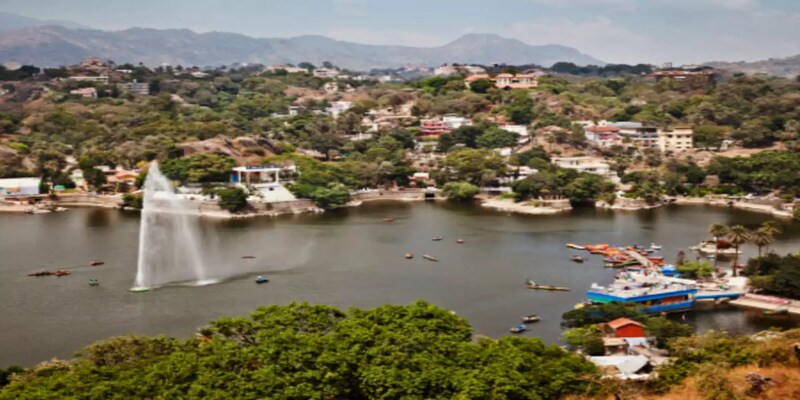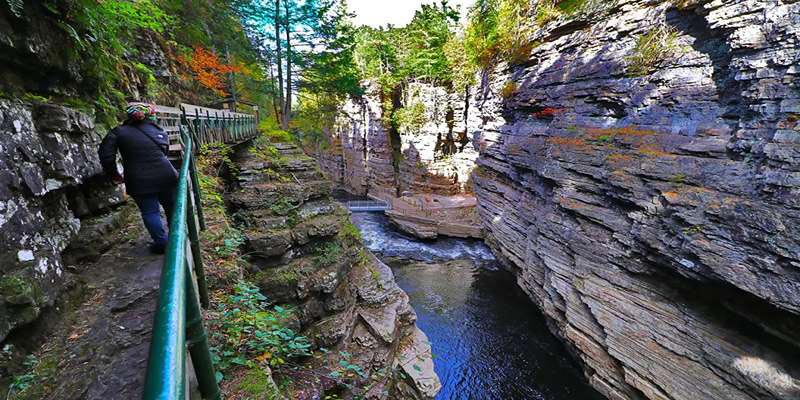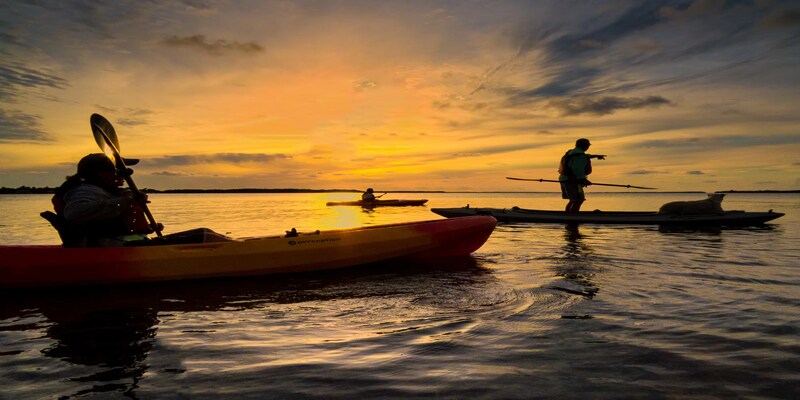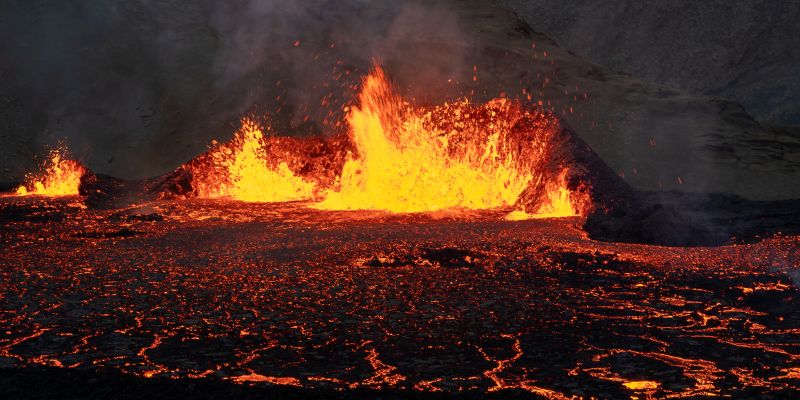In the Reykjanes Peninsula, more precisely close to Mount Fagradalsfjall, there was a recent volcanic eruption in Iceland. During this eruption, shafts of molten rock and lava flowed from the stratovolcano Mount Fagradalsfjall. Owing to its accessibility and relative safety for observation, the eruption garnered attention globally.
Visitors and locals alike were given a unique chance to see the untainted beauty and majesty of nature's volcanic powers up close. The eruption presented little threat to the infrastructure and nearby towns. Therefore, you can safely explore the country even after the eruption!
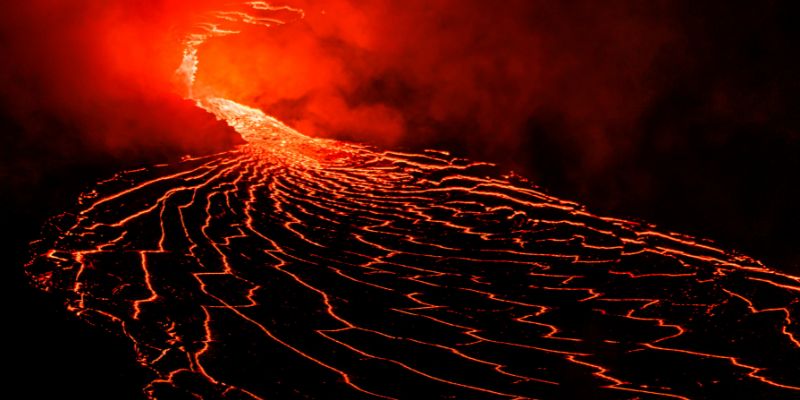
Is It Safe To Travel To Iceland After A Volcanic Eruption?
When controlling volcanic activity and guaranteeing the security of locals and tourists, officials are prepared and on guard. Nonetheless, informing the state of affairs is important before making travel plans. Temporary interruptions resulting from volcanic eruptions may include the cancellation of flights, closure of some roads, or restriction of access to specific places because of ashfall or possible risks.
Reliable sources, such as travel warnings, local news sources, and official government websites, are good for travelers to stay informed. It is imperative to comply with safety protocols, honor any off-limits areas, and obey directives from regional authorities. Even after a recent volcanic eruption, visitors may still enjoy Iceland's captivating landscapes and distinctive attractions with careful preparation, itinerary flexibility, and adherence to safety procedures.
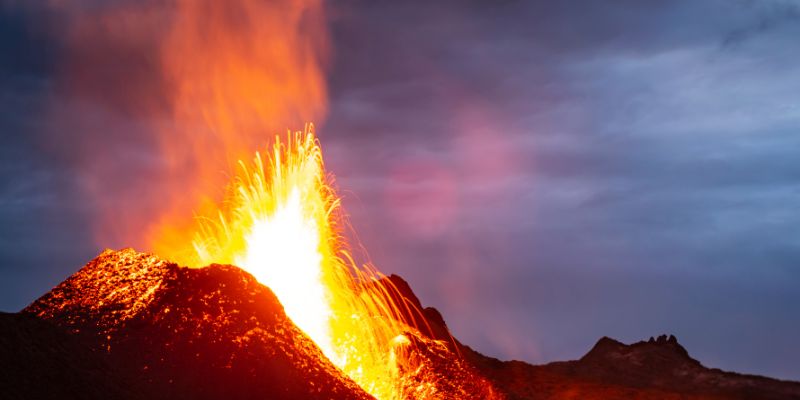
Potential Risks To Know Before Traveling To Iceland
Before traveling to Iceland following a volcanic eruption, it's important to be aware of potential risks and considerations for a safe and informed journey:
- Interruptions to Flight: Volcanic ash clouds may severely impact air travel following eruptions, which can result in aircraft delays or cancellations. It's critical to watch airline updates carefully, be adaptable to your travel schedule, and have backup plans ready if your itinerary changes.
- Road Blocks: Because of ash buildup and other related risks, roads and highways are frequently temporarily closed in response to volcanic eruptions. It becomes essential to keep up with road conditions, possible diversions, and government cautions, particularly while starting a road journey.
- Health Issues: Health hazards are associated with volcanic ash, particularly for people who have respiratory issues. Ashfall-affected areas require vigilance. It is possible to reduce the danger of inhalation by using masks or covers; those who are allergic to airborne particles should take these measures carefully.
- Natural Dangers: After a volcano erupts, its surroundings may contain lava flows, poisonous gas emissions, or unstable terrain, among other dangers. Heeding safety alerts, staying out of prohibited areas, and following government guidelines are crucial for personal safety.
- Variations In The Weather: Volcanic eruptions can quickly affect the weather, changing wind patterns, temperature, and visibility. Carrying appropriate clothes and equipment can help you prepare for inclement weather and protect your comfort and safety while traveling.
- Accessibility of Tourist Sites: Volcanic activity or safety concerns may cause the temporary closure of some tourist destinations or hiking paths. It is advisable to confirm in advance whether a certain place is accessible and to modify plans appropriately to guarantee a trouble-free trip.
- Emergencies: Get acquainted with the local authorities, medical facilities, and emergency contacts. It's important to be ready for anything unexpected. In an emergency, knowing who to call and where to go for aid guarantees a prompt response and support when required.
Volcanic Attractions In Iceland
The best volcanic regions and places that you might go to are listed below:
Mount Fagradalsfjall Eruption Site
Adventurers and environment lovers are drawn to the area around Mount Fagradalsfjall due to the recent volcanic outburst. This location, easily accessible from Reykjavik, offers a rare chance to get up close and personal with an active volcano's sheer force. Lava streaming, dazzling streams of molten lava, and brilliant displays of incandescent hues are sights visitors can't help but be in awe of. Hiking routes lead to this secure, supervised environment, which provides a remarkable experience for visitors to see nature's amazing power in action. Local authorities ensure a safe, stimulating visit.
Þríhnúkagígur Volcano
Descent into an extinct magma chamber is an amazing encounter that sets Þríhnúkagígur apart from other typical volcanic sights. A guided trip that includes a descent inside the chamber of the dormant volcano is offered exclusively to visitors of this amazing location. A distinct viewpoint on the inner workings of a volcano can be obtained by venturing deep inside the Earth. This unique experience offers visitors a captivating look into Iceland's volcanic past through its enormous size and vivid hues, allowing them to observe the geological treasures preserved within the ancient magma chamber.
Craters Laki
The Laki Craters, nestled in the isolated Highlands of Iceland, serve as a testament to the 1783 volcanic explosions. Large lava fields and a sequence of elongated craters define this place's bizarre and spectacular environment. The dramatic but captivating landscape illustrates the land's significant effect from nature's volcanic activity throughout Iceland's history. Trekking through this isolated area offers visitors a singular experience, enveloped in an unearthly setting that eloquently illustrates the transformational force of volcanic eruptions and their continuing effect on Iceland's geological history.
Surtsey Island
Surtsey Island, which emerged from a volcanic eruption in 1963, is listed as a UNESCO World Heritage Site because of its extraordinary ecological value. Its pristine status is protected by restricted access, although boat cruises surrounding its beaches offer a look at the changing environment. Its dynamic landscape—unaffected by human activity—makes it a living laboratory for scientific study of how life spreads over arid landmasses, enabling visitors to observe the natural process of ecosystem evolution.
Heimaey-Vestmannaeyjar Islands
Heimaey, a part of the Vestmannaeyjar archipelago, survived the volcanic eruption 1973 that jeopardized the settlement. This hardy island welcomes visitors to explore its volcanic environment, which includes the well-known Eldfell volcano. Tourists who observe the island's rehabilitation works firsthand learn about the community's fortitude in the face of hardship. The island provides a singular viewpoint on how people have adapted to adversity by showcasing the sheer strength of volcanic forces and the unwavering spirit of its residents.
Conclusion:
In conclusion, even if the most recent volcanic eruption in Iceland may cause people to feel uneasy, a trip there may still be an amazing experience if you take the right measures and are aware of the risks. It is essential to know the potential dangers, follow safety procedures, and stay up to current on travel warnings. The volcanic attractions of Iceland highlight the beauty of nature and the resiliency of Iceland. Travelers may see Iceland's volcanic wonders while honoring the eruption's aftermath and having a wonderful trip in this alluring region of fire and ice by adopting safety precautions and being prepared.

